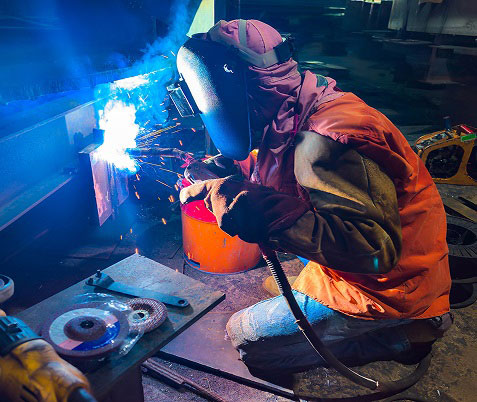As an ironworker, you’ll install structural and reinforcing iron and steel to form and support buildings, bridges, and roads. This physically demanding job requires strength, agility, and a head for heights. You’ll work with various tools and equipment, including welding and burning equipment, to secure steel and iron components to structures.
Becoming an Ironworker
Education and Training Requirements
To become an ironworker, you typically need a high school diploma or GED. While formal education beyond high school isn’t mandatory, it can be beneficial. Some vocational schools and community colleges offer courses in welding, blueprint reading, and mathematics – which are valuable skills in this trade.
Certifications and Apprenticeships
Apprenticeship programs are the primary path to becoming an ironworker. These programs typically last 3-4 years and are offered by unions and contractor associations. During your apprenticeship, you’ll learn:
- Welding Techniques
- Blueprint Reading
- Safety Procedures
- Rigging
- Structural Erection
Certifications can enhance your career prospects. The American Welding Society offers welding certifications, which are often required for specific projects. Some states may require additional licenses or certifications for certain types of work.
Essential Skills and Qualities
- Physical Strength and Stamina
- Balance and Coordination
- Ability to Work at Heights
- Attention to Detail
- Problem-Solving Skills
- Teamwork
- Welding and cutting techniques
- Knowledge of building materials
- Understanding of structural engineering principles
- Ability to read and interpret blueprints
Find Your Online Ironworker Program
| Quick Facts: Ironworkers | |
|---|---|
| 2023 Median Pay ?The wage at which half of the workers in the occupation earned more than that amount and half earned less. Median wage data are from the BLS Occupational Employment and Wage Statistics survey. In May 2023, the median annual wage for all workers was $48,060. | $60,780 per year $29.22 per hour |
| Typical Entry-Level Education ?Typical level of education that most workers need to enter this occupation. | High school diploma or equivalent |
| Work Experience in a Related Occupation ?Work experience that is commonly considered necessary by employers, or is a commonly accepted substitute for more formal types of training or education. | None |
| On-the-job Training ?Additional training needed (postemployment) to attain competency in the skills needed in this occupation. | Apprenticeship |
| Number of Jobs, 2023 ?The employment, or size, of this occupation in 2023, which is the base year of the 2023-33 employment projections. | 788,100 |
| Job Outlook, 2023-33 ?The projected percent change in employment from 2023 to 2033. The average growth rate for all occupations is 4 percent. | 4% (As fast as average) |
| Employment Change, 2023-33 ?The projected numeric change in employment from 2023 to 2033. | 3,700 |
Career Path and Opportunities
Job Roles and Responsibilities
- Loading, unloading, and moving structural steel and machinery
- Operating power hoists, cranes, and forklifts
- Positioning and securing steel bars or mesh in concrete forms
Advancement Prospects
- Apprentice
- Journeyman
- Master Ironworker
- Supervisor or Foreman
- Project Manager
Industry Demand and Trends
- Steady job growth due to ongoing infrastructure projects
- Increased use of prefabricated metal components
- Growing emphasis on sustainable construction practices



